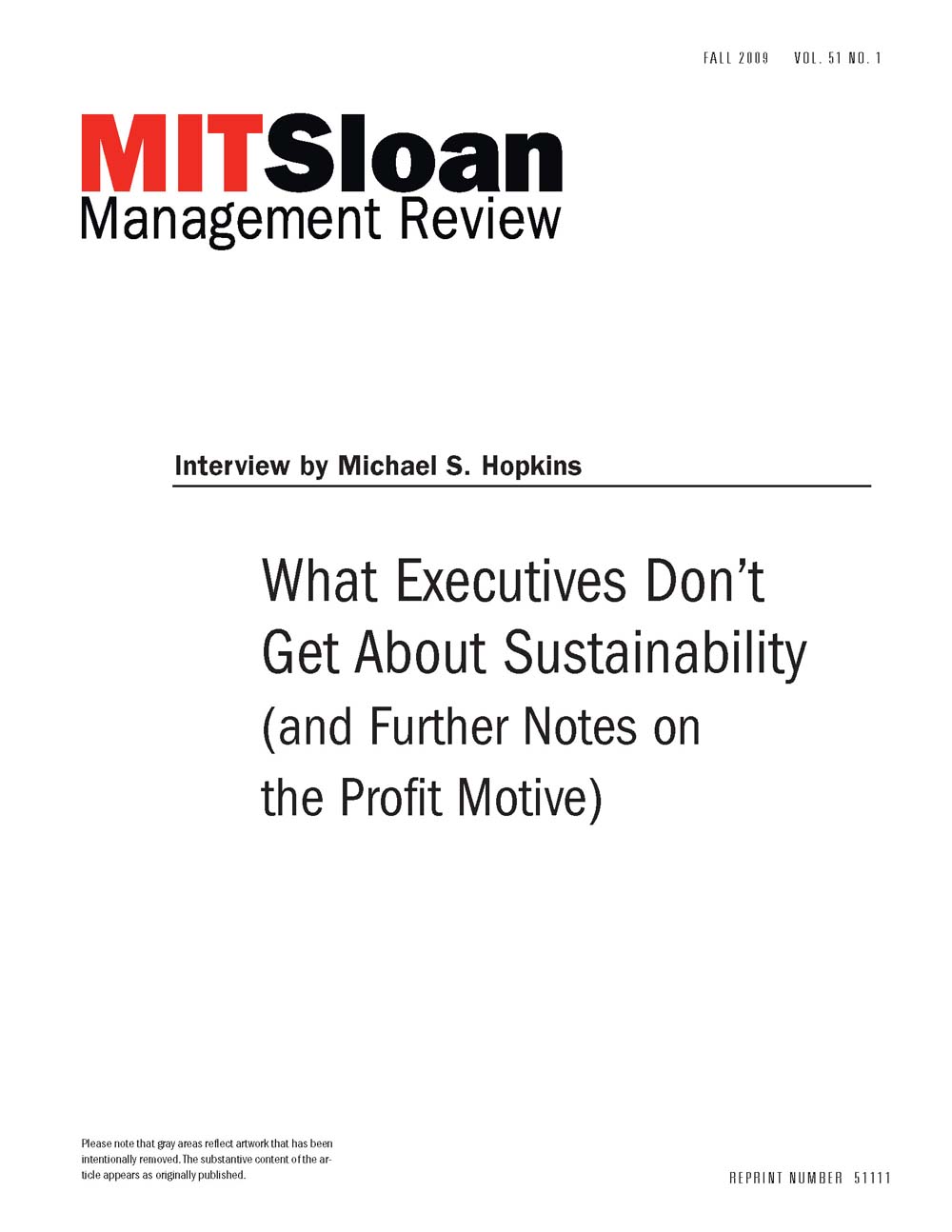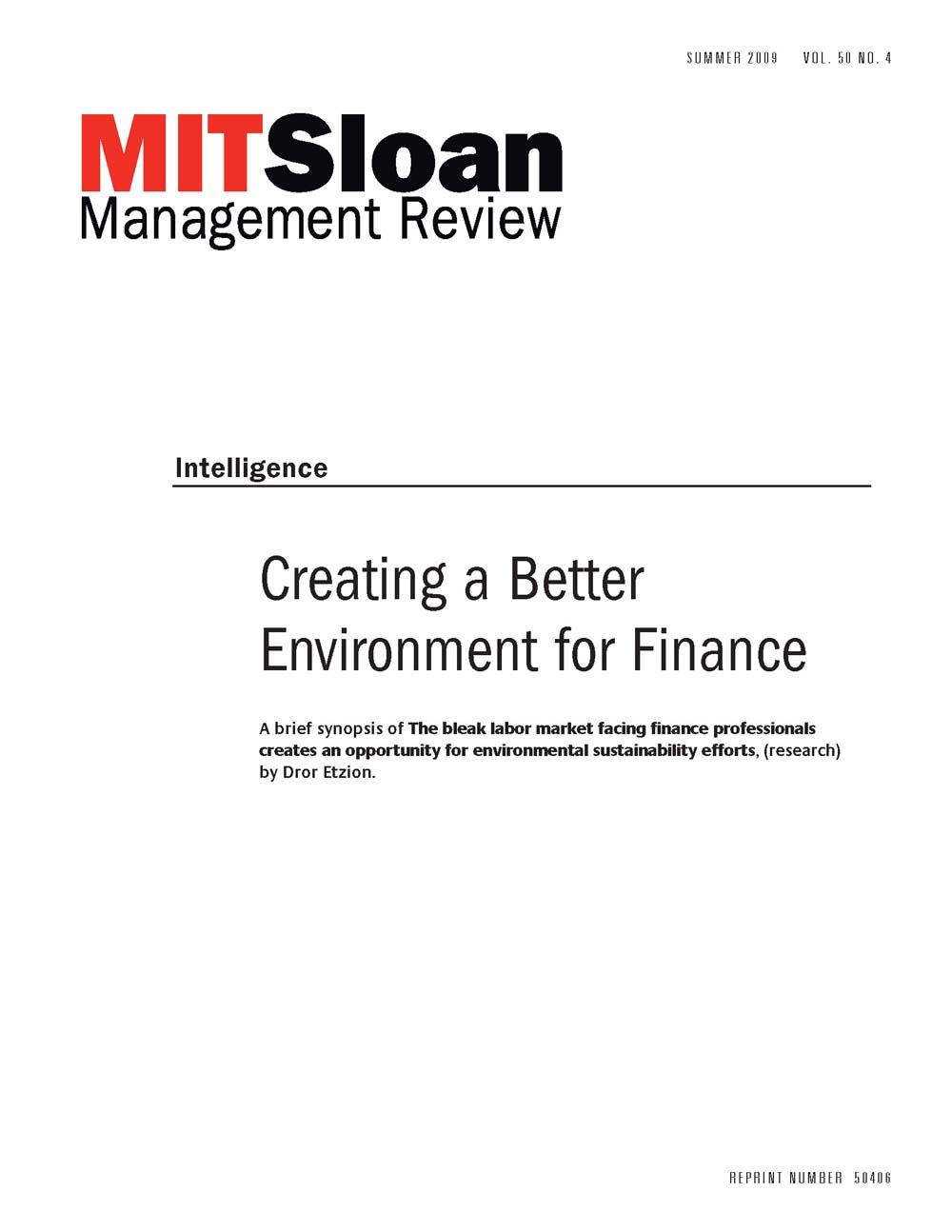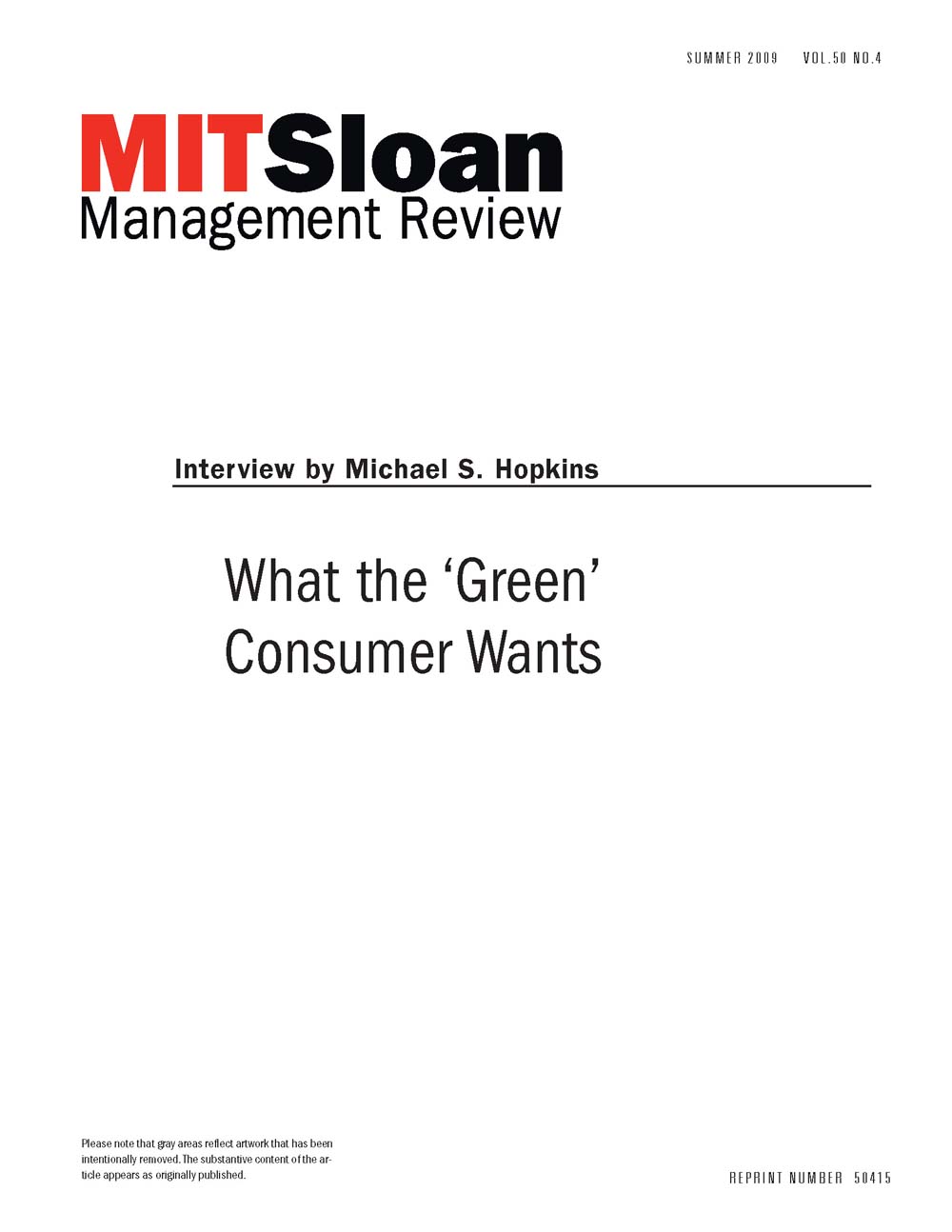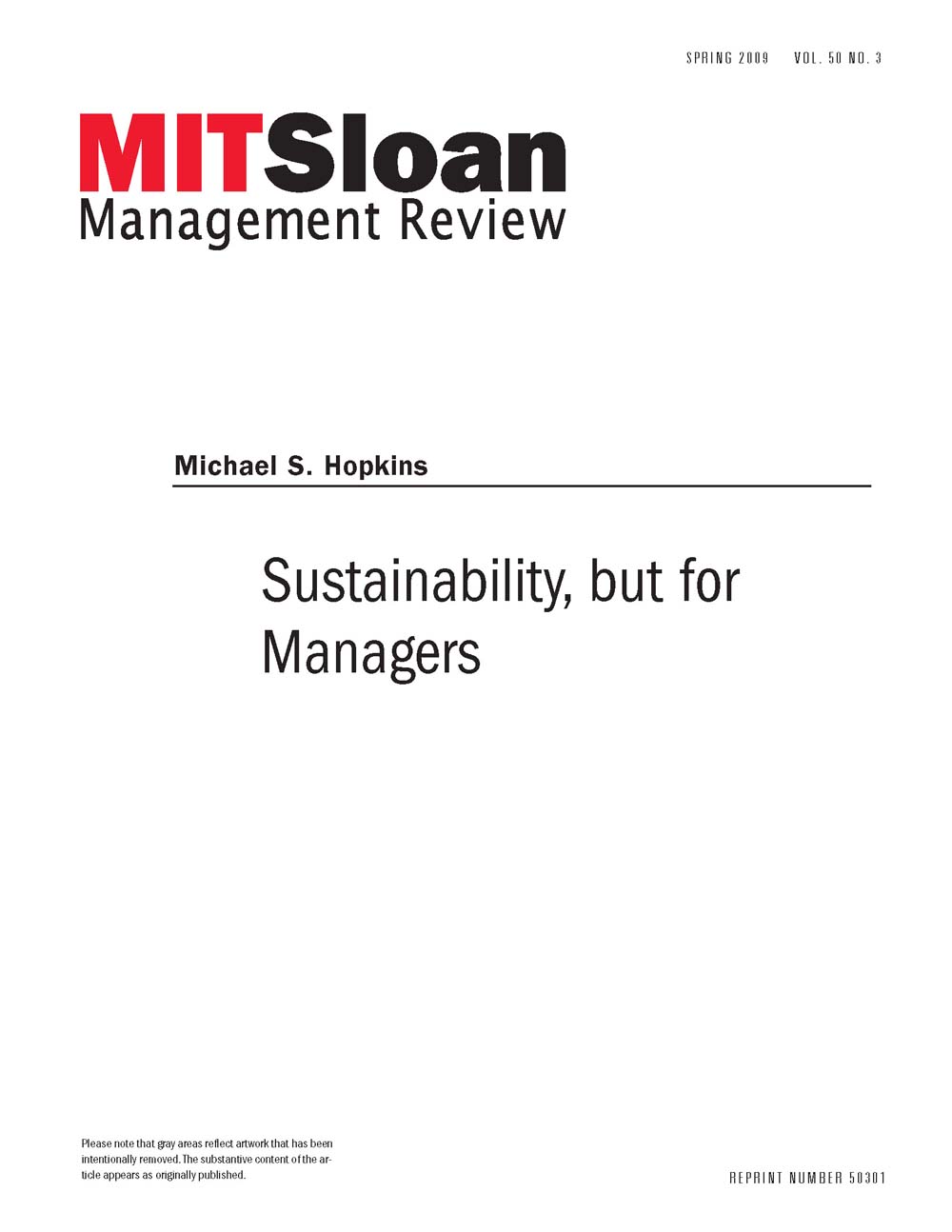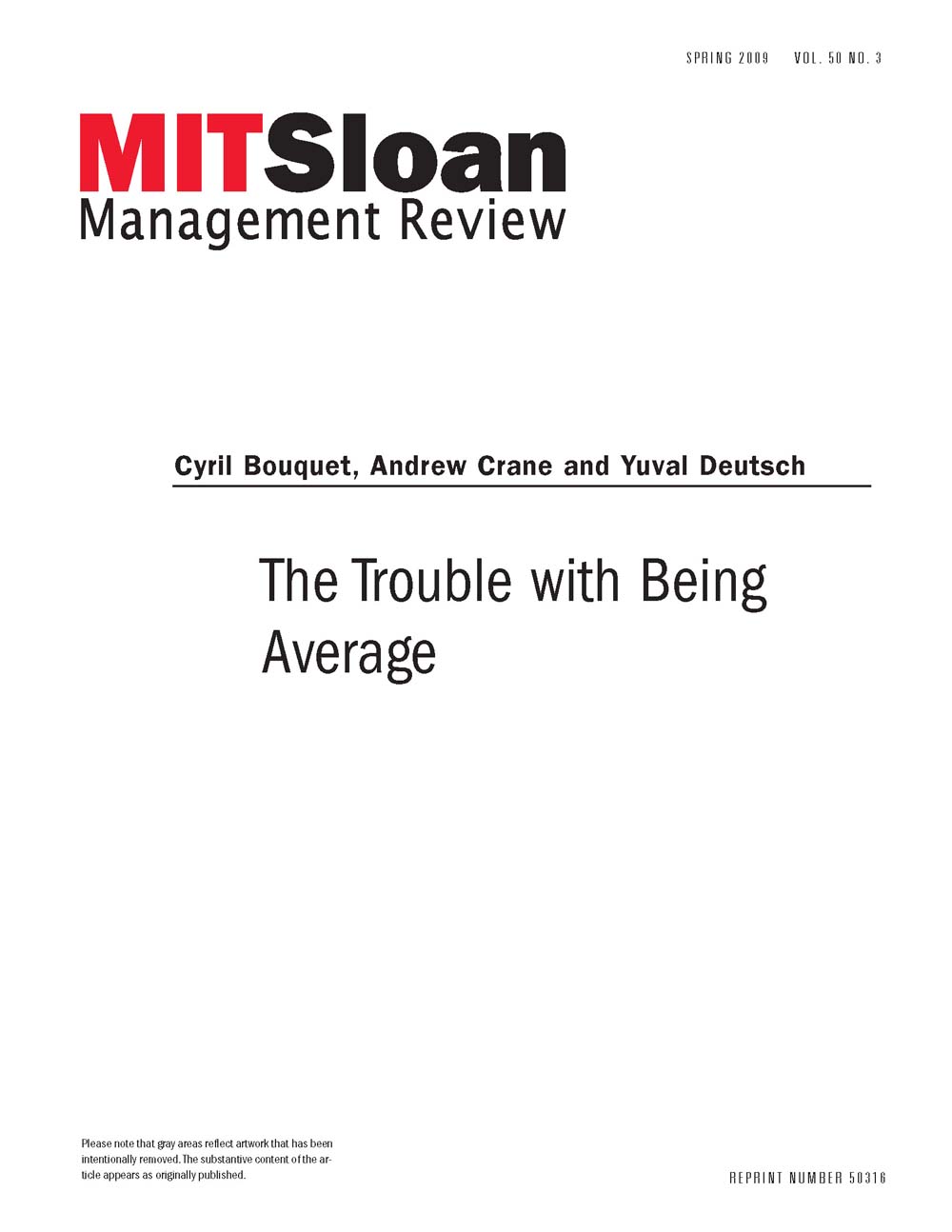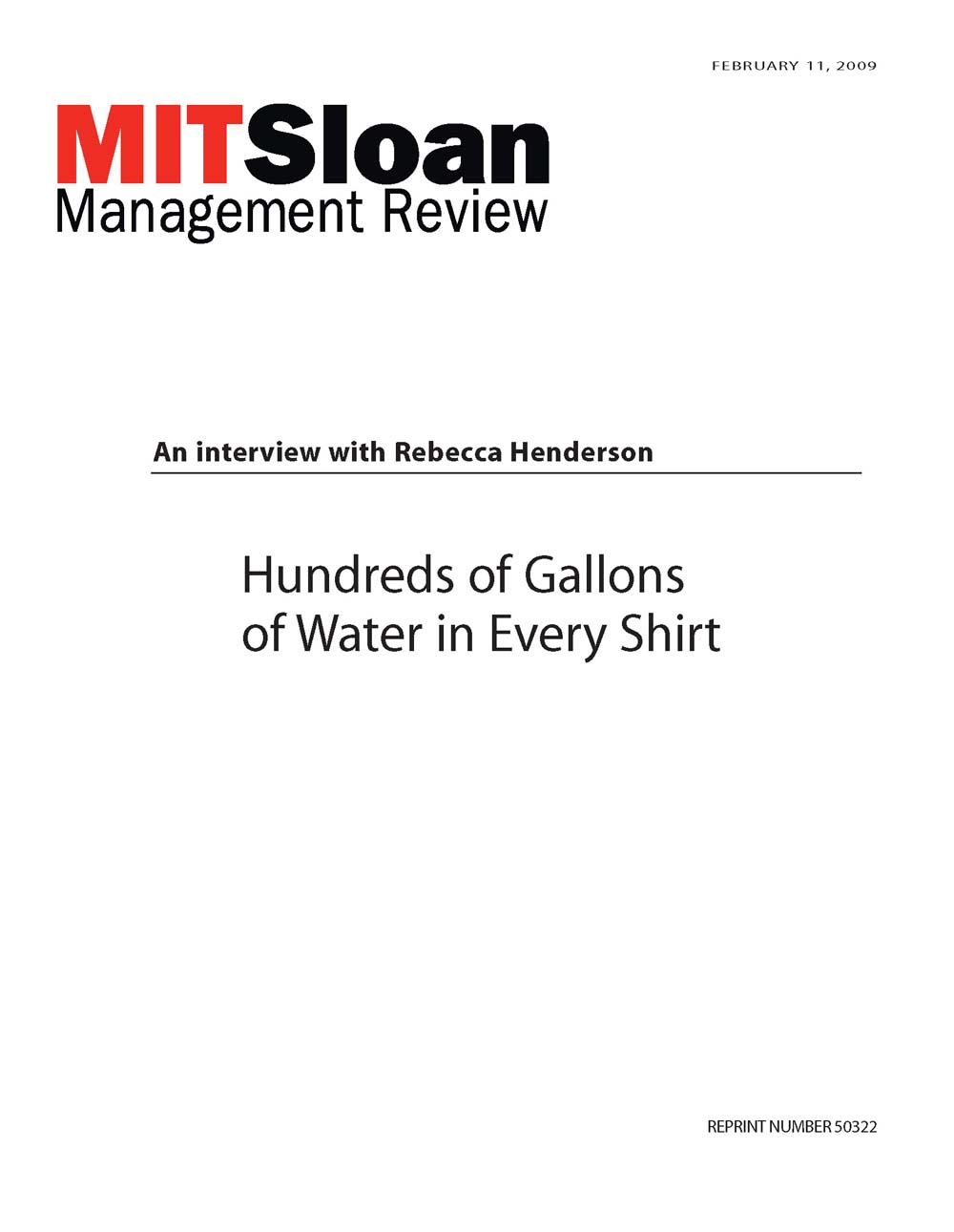Sustainability is the buzzword du jour, but how do you actually go about achieving it? Well, it’s clear there isn’t a one-size-fits-all strategy. Look at five companies, and you will see five different paths, each particular to a specific company’s market and problems. Take Nike Inc., whose brand is synonymous with cutting-edge design. Redesigning the athletic shoe to cut down on material became a core element of its approach to reducing waste. But what works for Nike might not exactly work for a company like start-up electric vehicle supplier Better PLC, LLC, which is rolling out electric car recharging stations. How does it pursue sustainability? By identifying the countries most receptive to its cutting-edge idea. General Electric Co. takes yet another approach, seeing sustainability not only as a cost-savings measure within the company (cut energy use, and emissions and costs go down) but also as a solution to sell to other companies–hence, its $17 billion ecomagination unit. Mining giant Rio Tinto, in turn, looks at it through a social lens, while Wal-Mart Stores Inc. sees sustainability as a challenge to revamp the practices of its more than 100,000 suppliers. In short, sustainability is less a target than an approach, which is why it is continually being refined. As companies ramp up understanding, they also push the envelope of what can be accomplished. Though it takes investment and commitment, the rewards are seen in cost savings, new products, customer engagement and employee commitment. In this way, sustainability becomes a competitive advantage.
Social Responsibility
Page 12 of 14
-
What Executives Don't Get About Sustainability (and Further Notes on the Profit Motive)
MIT Sloan Management Review's Business of Sustainability survey and thought leaders interview project identified numerous management challenges presented by the new competitive landscape that sustainability pressures is creating. Perhaps the biggest challenge, though, is how to build the "business case" for investing in a sustainability-related project--even when you believe that the project addresses a significant opportunity. What do executives need to know about sustainability as a business proposition? Interviewee Amory Lovins, co-founder of Rocky Mountain Institute, co-author of Natural Capitalism Creating the Next Industrial Revolution and recipient of a MacArthur Foundation "genius grant," argues that executives labor under several pernicious misunderstandings about how sustainability affects business--the worst being that sustainability efforts have to cost a company, when in fact, says Lovins, they nearly always increase profits. How does one begin to build a persuasive business case for undertaking sustainability-related initiatives? Map your flows and costs of materials and energy, says Lovins; you will find fiscal "leaks" that can be fixed, with direct bottom-line benefits. He also points out numerous side benefits of sustainability-related efforts: gains in innovation, labor productivity and appeal as a collaboration partner. Those benefits, he argues, will exceed the direct ones.
-
What the 'Green' Consumer Wants
What's the current attitude of the "green"-goods consumer in the downturn? And apart from general economic conditions, what factors determine whether consumers do--or do not--buy green? According to a research survey conducted by The Boston Consulting Group and an interview with Catherine Roche, a coauthor of the BCG survey and report, consumers haven't abandoned green--but have shifted emphasis among their reasons for pursuing it. "Before the crisis, green was about health and safety, green was about savings, green was about things that are directly beneficial to you--and it's still about that." Now, though, saving money is the dominant desire and benefit. Supported by the research, Roche discusses several other main points in her interview: (1) Price is not the obstacle when consumers consider green purchases; (2) green programs motivate and engage employees; and (3) companies are reluctant to publicize their green (or sustainability) efforts for fear they'll be accused of "greenwashing." This feature is culled from a special online exploration thread at sloanreview.mit.edu, and includes outtakes from a dozen additional short interviews with executives, as well as a longer interview with George Kern, head of the luxury watch maker IWC International Watch Co. It also contains infographics assessing which factors are likeliest to prevent a consumer from buying green. The biggest? "Awareness"--the fact that consumers are often unaware of green product alternatives.
-
Sustainability, but for Managers
There's a big—and getting bigger—public discussion about sustainability, but it's not the one managers need. Here are some early findings from a different kind of inquiry.
-
The Profit-Making Allure of Product Reconstruction
Product reconstruction, which covers a continuum of activities from recycling to refurbishing to remanufacturing, allows companies to sell high-performance goods at lower prices than equivalent new products while also realizing higher profits. Product reconstruction may open new markets for companies in meeting the needs of one or more of six kinds of customers: those who need to retain a specific product because it has a technically defined role in their current processes; end-users who want to avoid the need to respecify, reapprove or recertify a product; customers who make low utilization of new equipment; those who wish to continue using a product that has been discontinued by the original manufacturer; people who simply want to extend the service lives of used products, whether discontinued or not; and customers who are interested in environmentally friendly products. Beyond serving a particular market, the company must also possess certain kinds of expertise. To succeed at recycling, for example, it must be intimately familiar with the manufacturing process that initially created the product, be able to make extensive and time-consuming sales efforts (to help compete effectively against the many other companies in this low-barriers-to-entry industry) and be willing to specialize, given that particular materials vary greatly in complexity, time requirements, predictability, capital and labor characteristics and expense.
-
The Trouble with Being Average
Are corporate social responsibility programs beneficial to companies when they undertake overseas expansion? To address that question, the authors analyzed both financial and corporate social performance data for more than 800 U.S. public companies. In particular, the researchers set out to examine the relationship between corporate social responsibility and profitable international sales. The researchers found that those companies that had low or high levels of corporate social responsibility had significantly greater success internationally than those with moderate levels of corporate social responsibility. The authors suggest that companies with high levels of social performance may benefit internationally from their good reputation for corporate social responsibility, and companies with low levels may attain cost advantages from overseas expansion. However, companies in between may be "stuck in the middle"--and unable to obtain a competitive advantage internationally from their corporate social responsibility programs. Since retrenching from existing corporate social responsibility efforts can be viewed negatively by existing stakeholders, the authors recommend that companies that are "stuck in the middle" rethink their overseas corporate social responsibility programs--either to de-emphasize competitive advantage or to increase the programs' impact.
-
Hundreds of Gallons of Water in Every Shirt
Business strategy expert and longtime MIT Sloan professor Rebecca Henderson is a sustainability integrationist. Like other founding members of the school's Laboratory for Sustainable Business (S-Lab), she finds sustainability's implications everywhere in daily economic and social life and everywhere interrelated. But among the multi-disciplinary angles from which she attacks sustainability are two questions that are interestingly oblique: What capabilities and behaviors make organizations themselves sustainable? And, why are some organizations so extraordinarily better than others at getting new things done? (Learn more about Henderson, and find selected links to her work on our website sloanreview.mit.edu.) In this installment of The MIT Sustainability Interview series, Henderson spoke with MIT Sloan Management Review editor-in-chief Michael S. Hopkins about the baseline understandings and misunderstandings about sustainability, and the choices it will present to leaders.
-
Does It Pay To Be Good?
That is a question that has long puzzled marketers who have heard from customers that they want to do business with ethically based firms & #8212; defined as companies that produce products under conditions of progressive stakeholder relations, advanced environmental practices and respect for human rights. Marketers had no reason to doubt that sentiment, but they have always wondered if consumers would be willing to pay a higher price for ethically produced goods (since they tend to be more expensive to create.) It turns out that a series of controlled experiments proves that consumers will, in fact, pay a premium for ethically produced goods. But perhaps of equal interest is the fact that they will punish (by demanding a lower price) companies that are not seen as ethical. That relationship is not symmetrical. The punishment exacted is greater than the premium customers are willing to pay. How ethical do you have to be? Perhaps not as much as you might think. The research shows that a small degree of ethicalness “pays off.” It is not necessary for a company’s product to be “100% pure” in order to receive a price premium. This research is the first to find that consumers use price to punish unethical companies more than they use price to reward ethical companies, and that the ethicality of a company’s behavior is, indeed, an important consideration for consumers (as demonstrated in their willingness-to-pay decisions).




